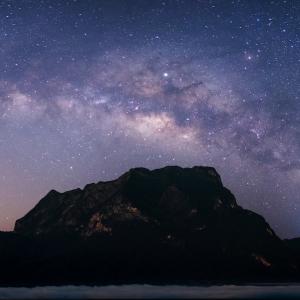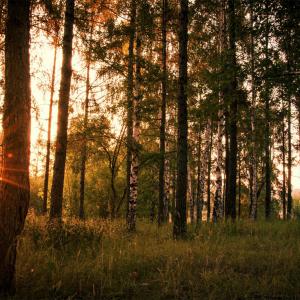
E. Ethelbert Miller is a writer and literary activist. Miller is host of the podcast On The Margin (WPFW).
Posts By This Author
Where Are the Light Bearers?
My mother's favorite expression was "the longest day has an end."
I think she often said this silently to herself after another day of
factory work, after another day of working in the garment
industry, after another day of taking care of three children,
after a day of cold water and another night of no heat. Even
when there were the Clifton "good times" she reminded us that
this too would end.
‘I Want People to Eat Their Way Across the Diasporas’
E. Ethelbert Miller interviews Michael W. Twitty, author of ‘The Cooking Gene.’
What is at the root of what one tastes? This is not an Alex Haley-like koan, but rather a historical and spiritual question.
Early in my career as a writer, I met Vertamae Smart-Grosvenor, author of Vibration Cooking or, The Travel Notes of a Geechee Girl. When she lived in Washington, D.C., we met on occasion at the local Safeway supermarket. Smart-Grosvenor was an American culinary anthropologist—and a food writer with a wonderful sense of humor.
Culinary historian Michael Twitty’s The Cooking Gene falls in the lineage of Smart-Grosvenor and maybe even the work of novelist and folklorist Zora Neale Hurston.
I first met Twitty years ago at Howard University in D.C. He was usually sitting in the main office of the African-American studies department in conversation with the secretary, Joyce Rose. One day I became aware of a change in his dress. Twitty may have been the only black person on Howard’s campus wearing a yarmulke.
Being black and Jewish is not new but remains intriguing. Howard is a place that prides itself on attracting a large number of students from Africa and the Caribbean. It upholds the tradition of advocating racial integration as well as the tenets of black nationalism. It’s an institution that can enhance one’s understanding of the various factors that define the black experience.
Poetry: In Search of Thomas Merton
There are days when I think about going to live with the monks.
My brother Richard did this in the early sixties. He never discussed
the idea with me. A day simply came and my family took him to the
LaGuardia Airport. We said goodbye and then he was gone.
I wonder how many men leave a home each year because of a
spiritual need to either be alone or closer to someone other than a
human being. Richard went away to upstate New York. Growing up
in the South Bronx I never thought about upstate. How many slaves
went to sleep every night tired of picking cotton but never dreaming
of Canada?
Lately I listen to people in cafes or pundits on television talking about
the recent presidential election. I guess this is how our nation felt
after Lincoln’s death. What will become of our Union now? Alas, I look
into the mirror and see a wretched freeman.
There is a way a tree will talk to a black man, how it might guide him
out of the woods and toward freedom. Outside my window I look at the
trees, I notice their naked limbs, their leaves gone from too much
weeping. I feel like a lover who wakes before daybreak only to discover
love is gone.
I feel a longing, a need for prayer and fasting. Where is the choir for
my soul to join? We are a people in need of song—it’s time to compose
new spirituals. We either dream or die.
How Long Has America Been Burning?
Since the beginning of the year
I've had a fear of flying.
So much white anger in the air.
I can't breathe.
The Nakedness of the Open Soul
When Jesus delivered the Sermon on the Mount, it was a chance to outline a blueprint for living.

cameta / wikicommons
Blessed are the poor in heart, for they shall see God. —Matthew 5:8
OVER TIME MANY things heal. Yet I wonder how people who have lost loved ones to domestic violence or wars measure time. How long does it take to forget or forgive? I also think of the wounded who now have missing limbs or have lost their sight. Do they stay awake counting their heartbeats? How do they find the fortitude to love again?
The heart is a fragile thing, yet at times it appears to be as strong as bone. Too many of us are familiar with the broken heart. We surrender to days of quiet desperation, often unhappy with our conditions. We succumb to disappointment or accept failure. Meanwhile the world hides behind ugliness, as hatred and prejudice become a prerequisite for racism and sexism. Sickness becomes the norm when everyone suffers from the fever of despair. It’s easy to say yes to indifference and for a society to become comfortable with intolerance.
When Jesus delivered the Sermon on the Mount, it was a chance to outline a blueprint for living. Surrounded by his disciples, the message of Jesus was one of “goodness” and the need to strengthen one’s faith. There are things in the world that are difficult to explain. It’s easy for one to embrace the darkness of shadows, to fail to see bright radiance of hope. Yet what defines our humanity is our capacity to love; this ability is what infuses history with moments of glitter. In many ways the 21st century will be shaped by religion and how we interpret the various sacred texts found in almost every culture. The movement of history is shaped by people.
Leadership performed by the common person requires preparation and courage. This type of leadership was on display after the tragedy at the Emanuel African Methodist Episcopal Church in Charleston, S.C. We all possess the divine quality to do right, even when we might be reluctant to act upon it. Fear is in a constant battle with faith. The unknown is usually a companion to social change. As we confront days of terror and terrorism, we must not lose our moral compass. We must not compromise our hearts.
Jesus placed faith and trust in his disciples, knowing they could spread his teachings. This would be possible if they opened themselves to becoming born anew. A new world is only possible if people are capable of discarding selfishness and accepting the nakedness of the open soul—hence the opportunity to be reborn with the acceptance of the Holy Spirit into one’s life. Compassion and the practice of forgiveness must eventually be taught to our young people. Our new generation of activists must prepare themselves to seek higher ground, a place where politics does not exclude the poor and those in need.
Beauty and Liberation
A tribute to artist Elizabeth Catlett
WHENEVER I entered a museum gallery and saw sculptures by Elizabeth Catlett, I wanted to touch them. The figures were often smooth, glistening, and engaging. They spoke to me in the same manner as the poetry of Langston Hughes and the musical compositions of Duke Ellington.
When Catlett died in April, I was reminded again that she created artwork for celebration and spiritual nourishment. She mastered the ability to bring beauty out of wood and stone.
In many ways Catlett was ahead of her times. During the 1940s she had explored the black woman’s body as a theme for sculpture and paintings. The images she created upheld the strength and dignity of women. The black woman presented as mother could be seen nurturing a child. In work such as “Homage to My Young Black Sisters,” the black woman figure strikes a posture of resistance with a fist raised. The buttocks of the cedar sculpture reflect strength as well as sensuality. One is quickly reminded of young Student Nonviolent Coordinating Committee workers, members of the Black Panther Party, and even activist Angela Davis. “Homage to My Young Black Sisters” was created in 1968, the same year the Summer Olympics in Mexico City saw track stars John Carlos and Tommie Smith raise their fists on the awards stand in a black power salute.
The art of Elizabeth Catlett ignored borders. Although she resided in Mexico, her work reflected the changing consciousness of African Americans in the 1960s and 1970s. The civil rights and black power movements renewed interest in African-American history. The black art movement introduced a desire to define a black aesthetic. Catlett’s work as an elder provided younger artists with a model and a teacher to emulate. In 1969, she created the print “Malcolm X Speaks for Us.” In it we see how she links Malcolm’s face to that of other black faces. The result is a powerful sense of community.
The Five Stages of Grief
A poem
Denial
This has nothing to do with blackness.
This has everything to do with blackness.
Anger
I could break things
but everything is broken.
Bargaining
Maybe I should have left
with the slave catchers.
A Few of My Favorite Things
Besides watching baseball (especially Ichiro Suzuki of the Seattle Mariners), here are a few other favorites of poet and writer E. Ethelbert Miller:
A Heart for Humanity
For political writers who see our work as a necessary tool in the struggle for social change, faith is essential; it determines and shapes commitment as well as vision.




